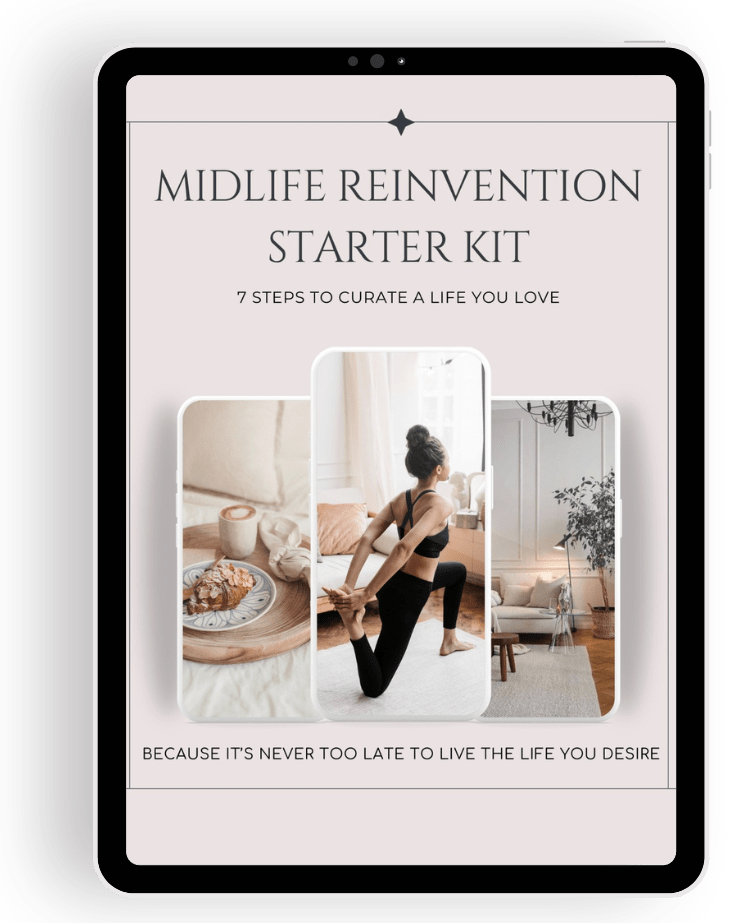As women approach perimenopause, the monthly menstrual cycle begins to shift in ways that can feel unpredictable and confusing. Many women find themselves asking:
- Why are my periods suddenly irregular?
- Why do I feel more intense PMS symptoms than before?
- What is happening to my hormones, and how can I support my body during this transition?
Understanding how the menstrual cycle works – and how it changes as you transition into menopause – can help you feel more in control, empowered, and prepared for this new chapter of life.
This guide will provide:
- ✔ A deep dive into the four phases of the menstrual cycle and their hormonal shifts.
- ✔ How perimenopause affects your cycle and overall health.
- ✔ Science-backed strategies to balance hormones and support well-being during the transition.

The Four Phases of the Menstrual Cycle
The menstrual cycle is a beautifully intricate system controlled by hormonal fluctuations. A typical cycle lasts 28 days (but can range between 21-35 days) and consists of four key phases:
- 1️⃣ Menstrual Phase (Day 1-5) – The shedding of the uterine lining.
- 2️⃣ Follicular Phase (Day 1-13) – The body prepares for ovulation.
- 3️⃣ Ovulatory Phase (Day 14-16) – The egg is released from the ovary.
- 4️⃣ Luteal Phase (Day 17-28) – Hormonal changes occur in preparation for pregnancy or menstruation.
Each phase is influenced by fluctuations in oestrogen, progesterone, luteinising hormone (LH), and follicle-stimulating hormone (FSH). Let’s explore what happens in each phase and how these hormones impact your body.
1. Menstrual Phase (Day 1-5) – Shedding & Renewal
🔹 What Happens?
- The cycle begins with day 1 of bleeding when the uterine lining (endometrium) is shed if no pregnancy has occurred.
- Oestrogen and progesterone are at their lowest levels, which can cause low energy, mood swings, and cramps.
🔹 Common Symptoms:
- ✔ Fatigue
- ✔ Mood fluctuations
- ✔ Cramping and bloating
- ✔ Headaches
🔹 How Perimenopause Affects This Phase:
- Periods may become lighter or heavier, and spotting between cycles can occur.
- You might experience longer or shorter periods than usual.
🔹 Supporting Your Body:
- ✔ Prioritise rest – Allow your body to recover and reduce stress.
- ✔ Eat iron-rich foods – Leafy greens, lentils, and grass-fed meat help replenish lost iron.
- ✔ Use heat therapy – A heating pad can relieve menstrual cramps.
2. Follicular Phase (Day 1-13) – Energy & Growth
🔹 What Happens?
- The follicular phase starts on day 1 (overlapping with the menstrual phase) and lasts until ovulation.
- The pituitary gland releases FSH (Follicle-Stimulating Hormone), stimulating ovarian follicles to grow.
- Oestrogen begins to rise, boosting energy, mood, and cognitive function.
🔹 Common Symptoms:
- ✔ Increased energy
- ✔ Enhanced focus & motivation
- ✔ Clearer skin
🔹 How Perimenopause Affects This Phase:
- Oestrogen levels may fluctuate unpredictably, causing mood swings and brain fog.
- Follicles become less responsive, leading to longer cycles or skipped ovulation.
🔹 Supporting Your Body:
- ✔ Eat protein & healthy fats – Eggs, avocados, and nuts stabilise blood sugar and support hormonal balance.
- ✔ Engage in strength training – Boosts metabolism and protects muscle mass.
- ✔ Prioritise gut health – Fermented foods and probiotics support oestrogen metabolism.
3. Ovulatory Phase (Day 14-16) – Peak Energy & Fertility
🔹 What Happens?
- Oestrogen peaks, triggering the release of LH (Luteinising Hormone), which causes ovulation (the release of an egg).
- Testosterone also rises, boosting libido, confidence, and energy.
🔹 Common Symptoms:
- ✔ Increased libido
- ✔ Glowing skin
- ✔ More sociable and confident
- ✔ Higher energy levels
🔹 How Perimenopause Affects This Phase:
- Anovulation (skipped ovulation) becomes more common, leading to oestrogen dominance and progesterone deficiency.
- Oestrogen spikes may become extreme, causing migraines, anxiety, and breast tenderness.
🔹 Supporting Your Body:
- ✔ Eat cruciferous vegetables – Broccoli, kale, and cauliflower help metabolise excess oestrogen.
- ✔ Stay hydrated – Supports cervical fluid production and reduces bloating.
- ✔ Limit alcohol & caffeine – Helps stabilise hormone levels and prevent mood swings.
4. Luteal Phase (Day 17-28) – PMS & Hormonal Shifts
🔹 What Happens?
- After ovulation, the empty follicle transforms into the corpus luteum, producing progesterone.
- If pregnancy doesn’t occur, progesterone declines, triggering PMS symptoms and the start of the next cycle.
🔹 Common Symptoms:
- ✔ Bloating & water retention
- ✔ Mood swings, irritability, and anxiety
- ✔ Sugar cravings
- ✔ Breast tenderness
- ✔ Insomnia
🔹 How Perimenopause Affects This Phase:
- Progesterone levels decline significantly, leading to worsened PMS symptoms and increased anxiety.
- Oestrogen dominance can cause heavier, more painful periods and worsened bloating.
🔹 Supporting Your Body:
- ✔ Increase magnesium intake – Helps with mood stability and sleep.
- ✔ Practice relaxation techniques – Meditation and breathwork reduce stress and ease PMS symptoms.
- ✔ Prioritise sleep hygiene – Keep a consistent bedtime to regulate cortisol levels.
How Perimenopause Disrupts the Menstrual Cycle
During perimenopause, hormonal fluctuations become more extreme and unpredictable, leading to:
- ✔ Irregular periods – Cycles may become longer, shorter, heavier, or lighter.
- ✔ Worsened PMS symptoms – Due to low progesterone and fluctuating oestrogen.
- ✔ Skipped ovulation – More common in late perimenopause, leading to oestrogen dominance.
- ✔ Increased stress and anxiety – Due to the impact of hormones on the nervous system.
These changes signal the gradual transition toward menopause when menstruation eventually stops.

Final Thoughts: Embracing Your Changing Cycle
Your menstrual cycle is a powerful indicator of your overall health. Understanding its phases – and the changes that come with perimenopause – can help you navigate this transition with confidence and ease.
📌 If you’re struggling with cycle irregularities, hormone imbalances, or menopause symptoms, I’m here to help.
As a Menopause Wellness Coach and Holistic Health Practitioner, I offer personalised coaching to help you regain balance, feel energised, and navigate perimenopause with clarity.
👉 Book a consultation today and take control of your hormonal health!
DISCLAIMER
I am not a health professional or medical practitioner. I am a certified Menopause Wellness Coach, and the information provided here is intended for educational and informational purposes only. It should not be taken as medical advice, diagnosis, or treatment. For any health-related concerns or queries, please consult your GP or a qualified healthcare provider. Always seek the advice of a medical professional before making any changes to your healthcare routine or starting new treatments.

Feel free to sign up to my Friday Morning Love Note HERE! This isn’t just a newsletter - it’s your invitation to pause, reflect, and realign with you. Every week, we’ll journey together to uncover the small, meaningful shifts that will help you design a life that feels uniquely and beautifully yours. Each week, I’ll deliver fresh intentions, uplifting tips, and simple shifts to inspire purposeful, creative living.




